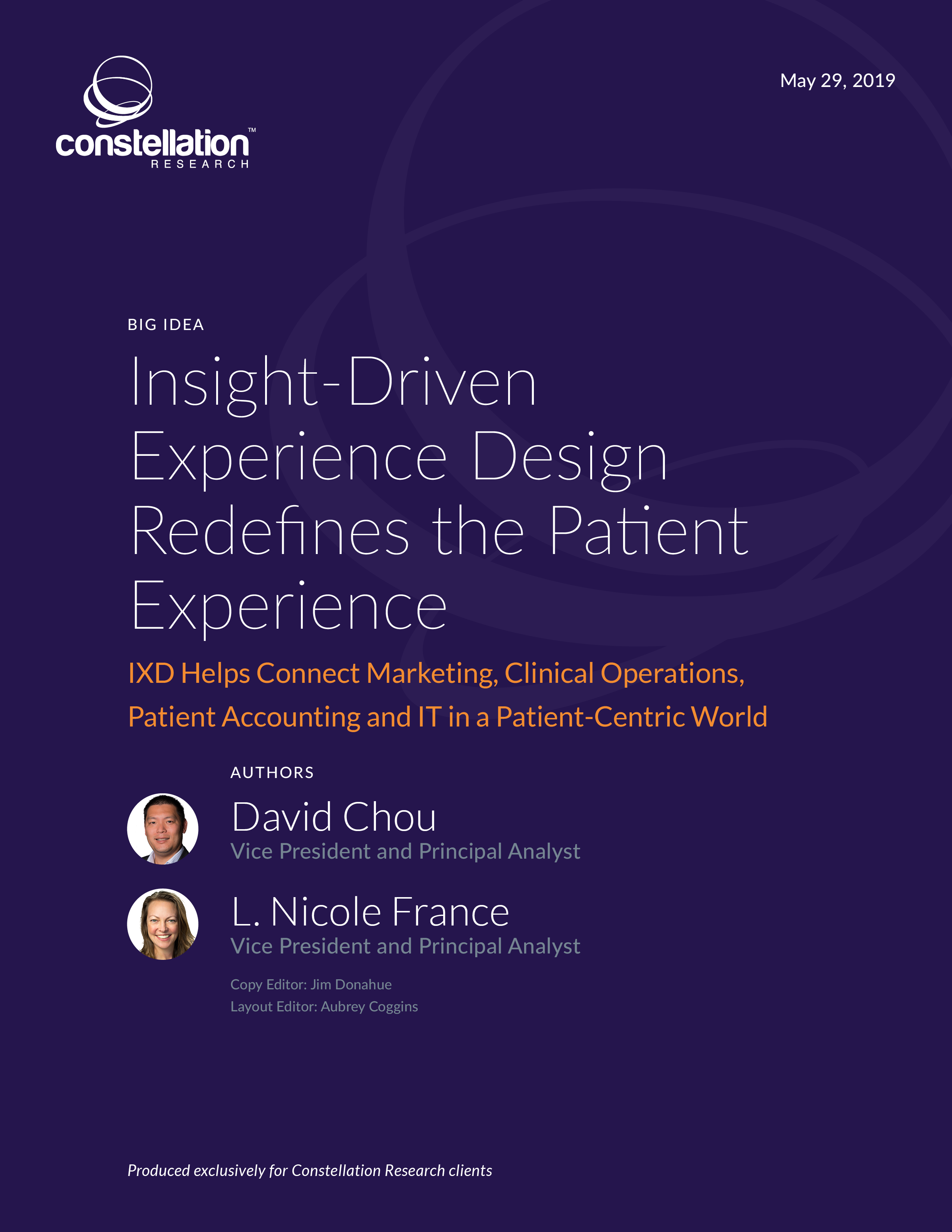 IXD Helps Connect Marketing, Clinical Operations, Patient Accounting and IT in a Patient-Centric World
IXD Helps Connect Marketing, Clinical Operations, Patient Accounting and IT in a Patient-Centric World
Much of the discussion around digital transformation in healthcare involves electronic health records and the use of clinical and other data to improve patient outcomes. As critical as both these things are, one crucial area in need of change is getting overlooked: the experience that patients and their caregivers have within the healthcare system. This is as much an issue of understanding and influencing the nonclinical aspects of patient care as it is of delivering good “customer service.”
The internet has made the process of comparing doctors, hospitals and clinics far easier than it ever was before. With easy access to information, both expert and otherwise, patients evaluate doctors, clinics and hospitals before they decide where to go.
In this increasingly competitive environment, the focus on patients and how best to serve them determines success or failure. For any health system, this simple principle is far from easy to meet. The ever-expanding array of technology tools that promise to improve patient engagement often have done anything but. This and the deep silos separating marketing, scheduling, patient accounting and information technology are harming patient relationships rather than helping them.
With digital transformation now a top priority for chief executives, patients must be at the heart of any new strategy. Providers must build a consistent and cohesive picture of the patient journey across all departments. It’s time to put patients at the center of transforming cooperation across marketing, clinical care, social work, information technology—and every patient care department in the hospital.
This report introduces the concept of patient understanding, defines its key characteristics and provides an overview of how it enables the design of insight-driven patient experiences. This concept is known as insight-driven experience design (IXD).
Executive Network
Click Here, Learn More



